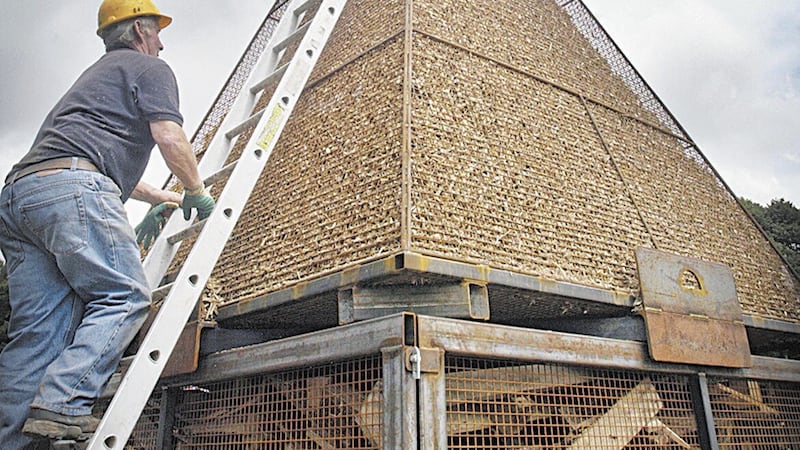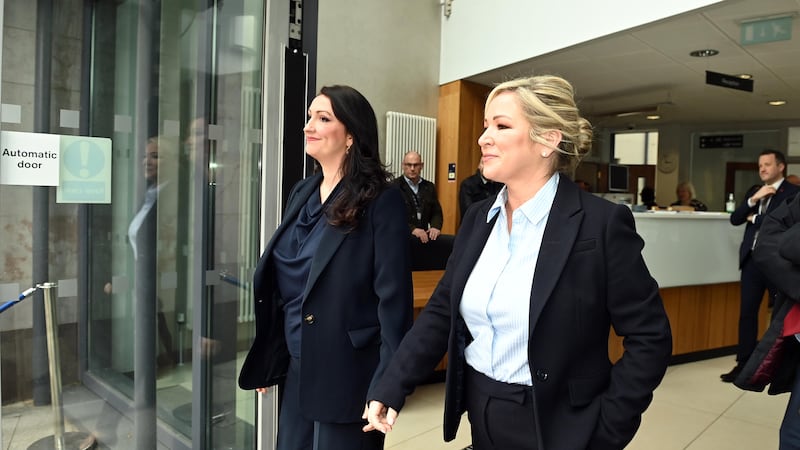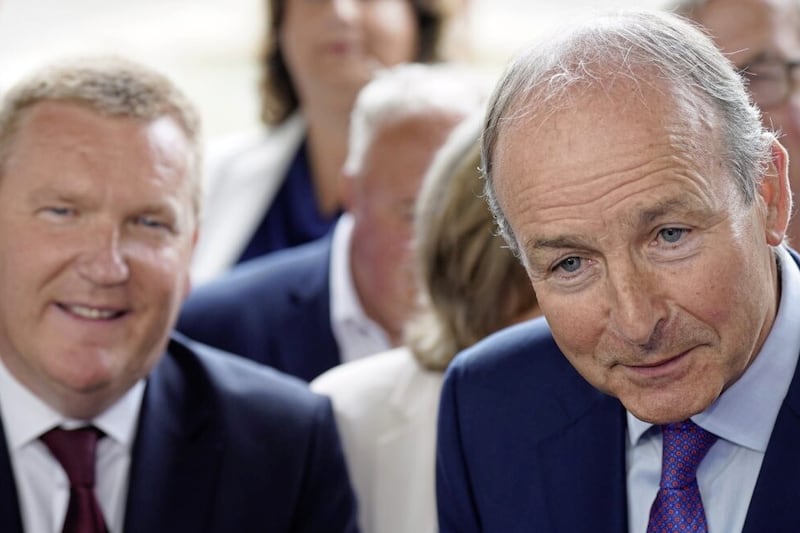Whatever happened to eco-bonfires?
Back in 2008, community organisations received grants of up to £3,000 from local councils in order to ensure that the annual Eleventh Night bonfires were free of tyres and other pollutants.
At that stage it was reported that the Orange Order in the longer term was looking to move towards the use of beacons as a sustainable alternative to the traditional bonfire. Although the order itself doesn’t organise bonfires, its members are the backbone behind many of the community-based groups who do.
By 2013, more than 120 beacons had been delivered to community-based groups across the north to use as an environmentally-friendly alternative.
These are two-part steel structures that are up to five metres high and are packed with sustainable wood shavings and willow and are set on a bed of sand to deflect heat from surrounding areas.
I have seen some steel cages where tree trimmings and scrap wood have been burnt as part of Halloween bonfires in the Mid-Ulster council area, but I can’t recall driving around in July and seeing enviro-beacons being readied for the festivities.
Maybe they are in use, but the focus is always on the biggest and most dangerous of bonfire sites. What we see year on year is attempts by different areas to outdo each other in how tall they can build or how many pallets they can use and how much toxic waste can be dumped into the core. It’s culture Jim, but not as we know it.
Read more: What are eleventh night bonfires?
The tradition of Eleventh Night bonfires goes back to the lighting of fires on hillsides in Country Antrim and County Down to guide the ships containing the army of King William of Orange into Belfast Harbour where the troops mustered before heading south and into battle on the banks of the Boyne.
It’s part of Ulster British identity and tradition, and in of itself, it’s not a bad thing. So how has it morphed into something that’s viewed widely by the nationalist and republican community as a hate-fest?
Each year, we witness displays of Irish flags topping bonfires to be burned. Election posters are gathered up and burned in an act designed to both denigrate and intimidate.
It’s easy enough to cut down an election poster with a Stanley knife and stash it away until bonfire season. It’s a whole different level of depraved to take the time to make and hoist an effigy to be burned. These effigies are overwhelmingly of female politicians, it has to be said.
In the next five days, unionist politicians and loyalist community activists have the opportunity to go out to these bonfire sites and engage with bonfire builders and explain to them how the burning of flags and effigies does their community no good. They have a chance to de-escalate a tense time which, in turn, has the possibility to encourage a greater sense of cultural accommodation.
Organisers of Craigyhill bonfire in Larne said they had already spent £29,000 on buying pallets to build this year’s fire, despite a bonfire builders dying in a fall at a nearby pyre last year.
Despite claiming to have built the world’s largest bonfire, it has not been officially recognised by the Guinness Book of Records. The money is purportedly raised via community donations.
But imagine what that amount of money might do for young people in those communities instead.
There is so much time and effort invested – mostly by young people – in building bonfires for weeks in advance of the Eleventh Night. Imagine what might be possible if that enthusiasm and time could be harnessed for a better purpose?
Take young people to the Battle of the Boyne site. Encourage them to get involved in initiatives that enhance the environment where they live – everything from painting murals to planting flowers. Get the older generation involved in storytelling about the history of the community. Help them to develop a historical narrative about the community where they live, drawing on the experiences of parents, grandparents and neighbours.
If those of nationalist or republican identities, north or south, or indeed the Irish government are to take more active steps towards recognising and accommodating loyalist and Ulster British identities on the island, then this creates the question of whether that means accepting a status quo of the burning of flags and effigies, inciting crowds to sing sectarian songs and building huge pyres that damage communities as much as the environment.
More fundamentally it put the question to unionism and loyalism: are those actions who you really are, or is your identity distinct from them and how can the two be separated?
It’s time to knock on the head once and for all the notion that burning flags and effigies is legitimate cultural expression.







